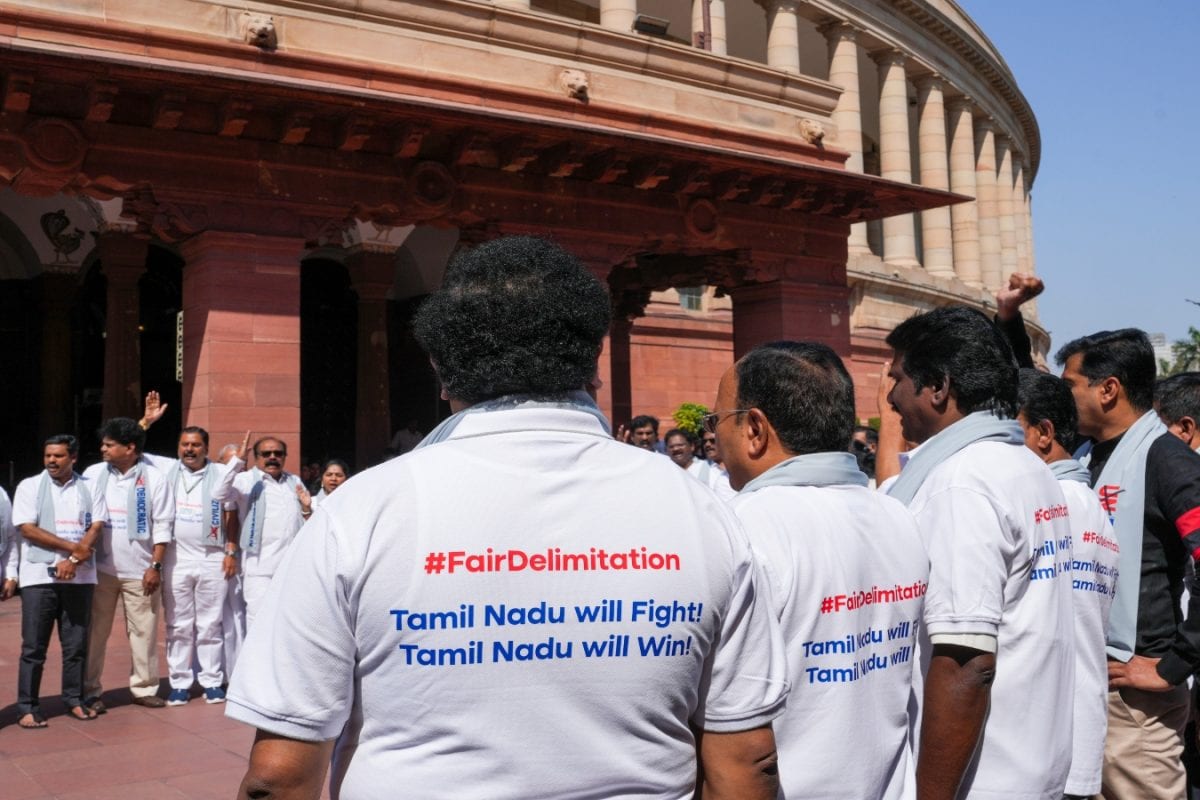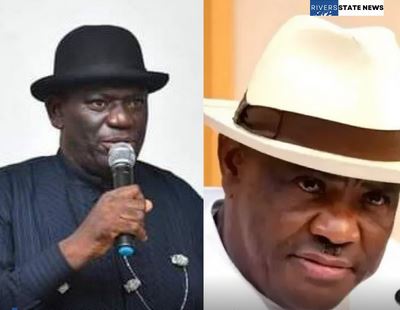
The alarm over delimitation in Tamil Nadu is a ruse. The real objective is neo-feudalism through soft-secessionism The shrillness of Tamil Nadu’s Chief Minister on the issue of delimitation is attracting considerable attention from the commentariat. Speeches are being made, and articles are being written—a torrent of spilt ink and words everywhere.
Even the Rupee symbol, a creation of a DMK MLA’s son and once enthusiastically endorsed by former Union Finance Minister P. Chidambaram, has not been spared. Yet we must ask ourselves—why, and why particularly Tamil Nadu? Those familiar with the history of the British project known as Dravidianism will easily recognise that the Chief Minister’s so-called concerns are a smokescreen.

As the Dravidian movement enters its terminal phase, these are frustrated last-ditch attempts to revive the same tired divisions that once propelled it, so that the family and business interests of the current regime may be artificially prolonged. First, there is a calculated attempt to rectify the very first failure of the Dravidian movement—its eradication from all of India except Tamil Nadu. One must recall that the DMK’s predecessor, the Justice Party, once included a sizeable number of leaders who were not Tamil, and who allied with intermediate castes in Tamil Nadu to assert social and economic dominance.
Yet this multi-caste alliance ultimately faltered. Much like the breakup of Pakistan in 1971, the limited commonalities they shared were insufficient to hold these disparate groupings together. Thus, the dream of De Nobili, Caldwell, Pope, and Grant-Duff—that the South could somehow be convinced it was not Sanatani , not Bharatiya , and that it did not belong within a unified Bharat—came to an end.
Only Tamil Nadu held out. The present clarion call to other southern parties is an invitation to those wandering in political wilderness: to once again weaponise hatred for Sanatana Dharma, stoke ethnic anxieties, and claw back some semblance of power and relevance—a reversion to the original Dravidian formulation. Second—and closely related to the foregoing point—is the ritual invocation of the word “federalism.
" India is not a federation. The word appears nowhere in the Constitution, and Parliament retains the unilateral authority to create or dissolve states as it sees fit. A federation is a union of multiple, previously distinct countries or peoples coming together under one framework.
Bharat is, therefore, not a federation. It was, is, and will remain a unitary entity, with states existing solely for administrative convenience and to better reflect the myriad ways in which Bhāratiyata manifests. The talk of a “federation" or a supposed “federal structure" is an attempt to sanctify the fiction that Tamil Nadu is a separate country.
Before dismissing this as far-fetched, one must recall that EV Ramaswamy Naicker—a declared Sanatani hater who called for Brahmin genocide, desecrated murtis of Lord Ganesha, and garlanded Lord Rama with slippers—was an open British collaborator. His party, the Dravidar Kazhagam (DK), one of the DMK’s ideological predecessors, repeatedly demanded Tamil Nadu’s secession from India. What, then, can one expect from his ideological successors who today lead the state, when he himself attempted to form a union between the Madras Presidency and Pakistan—a proposal so bizarre that even Mohammad Jinnah found it incredulous and dismissed it outright? Thirdly, premised on the fiction that Tamil Nadu is somehow separate from Bharat, the Chief Minister has called for yet another disastrous freeze on delimitation to “protect" the state.
Tamil Nadu is currently overrepresented in Parliament by approximately five Lok Sabha seats — or around 12 per cent. A resident of Tamil Nadu, therefore, already enjoys 12 per cent more influence than the state’s population warrants, while, say, a resident of Uttar Pradesh is effectively penalised with an 11 per cent reduction in representative weight. For a party that touts itself as an anti-caste crusader, the Chief Minister’s vitriol suggests a different caste system altogether — one where the value of a Bharatiya’s vote depends on which state he resides in.
The much-reviled ‘Inthi’-wallahs are to have votes of diminished worth, while the ever-so-supreme Dravidar must possess the most powerful ballot. We affirm that every single Bharatiya , without exception, must have the same vote; that was the very basis on which this Republic was founded, and any vitiation of this principle is a death knell to democracy. There has never been a direct link between family planning and economic growth.
Indira Gandhi’s ill-conceived delimitation freeze was a convenient cover for the spectacular failure of her economic policies — and a tactical manoeuvre to restrict the emerging anti-Congress forces across the north. To extend that freeze further is to ratify a regime in which all citizens are not equal — one where multiple classes of citizenship exist, each with differential voting rights. If that is to be our direction, then let us end the pretence of democracy and formally hand over the Republic to recalcitrant tantrum-artists and professional troublemakers.
The most important question, though, is this: why must this be the chosen hill to die on? The answer is quite simple. There are satraps in parts of this country who believe they are entitled to be ‘heard’ and ‘accommodated’. Having grown accustomed to wielding disproportionate influence as kingmakers in fragile coalitions, their present irrelevance is beginning to puncture their strongman aura.
It was precisely this kingmaker status that once enabled them to twist the Centre’s arm and extract all manner of excessive concessions. The former Chief Minister of Tamil Nadu—the current incumbent’s father—even prevented the then Prime Minister from attending the Commonwealth Heads of Government Meeting because it was being held in Sri Lanka. This decline in negotiating power with the Centre has made them anxious, for it was the very foundation of their political business model.
With indiscriminate central funding drying up, operating their machinery and sustaining the largesse of their egos has become increasingly difficult. In today’s milieu, it is no longer easy for a family-run, neo-feudal, caste-based outfit—one that controls only a single state—to hold the entire nation to ransom. The very existence of such outfits is now under threat.
Their modus operandi has long been to capture state institutions through manufactured identities and to siphon off resources—especially central funds, which they treated as their pound of flesh in return for political support. This, in truth, is why the Chief Minister of Tamil Nadu appears so apoplectic. The writing on the wall is clear— mene mene tekel upharsin , to borrow from the Book of Daniel in the Old Testament.
The problem with delimitation is, in fact, a question of state reorganisation masquerading as something else. Whether it is regional imbalance, the perceived dominance of the North, or specific issues such as the stagnation of Karnataka (with the Bruhat Bengaluru Mahanagara Palike now bankrupt), Dr BR Ambedkar had foreseen it all as early as 1955. His publication that year was a scathing critique of the States Reorganisation Commission, which submitted its report in 1956.
The Commission’s nostrum of “One Language, One State" created an artificial linguistic identity—unprecedented in our history—which pitted one Bharatiya against another. At the same time, the vast population disparities between the resulting states meant each had significantly different bargaining power vis-à-vis the Centre. As a result, the Chief Minister of undivided Andhra Pradesh could easily overshadow the concerns of the Chief Minister of Goa.
The solution, as Ambedkar pointed out, lay in the creation of smaller, roughly equally populated states. Before we are drowned out by the wails and foghorns of Tamil Eelam sophists who cannot abide the idea of subdividing Tamil Nadu—along with other historically, economically, and culturally incoherent states—it is worth revisiting Tamil history. Under the imperial Cholas, the Tamil peoples ruled far and wide and symbolically wore three crowns, representing the three distinct regions that, in modern terms, ought to constitute separate states within the Tamil lands.
Indeed, the notion of a unified Tamil Nadu did not exist until the Telugu-speaking regions were separated in 1956. It is also worth recalling that all Chola kings bore Sanskrit titles and were ardent patrons of Sanatana Dharma through and through. Tamil Nadu is not a country.
Bharat is not a federation. All voters must be equal. All citizens must be equal.
These are foundational tenets of the Bharatiya social contract. Any deviation from these red lines would spell the formal end of democracy—and leave Bharat with far greater problems to confront in the future. The alarm over delimitation in Tamil Nadu is a ruse.
The real objective is neo-feudalism through soft-secessionism. Gautam R. Desiraju and Deekhit Bhattacharya are authors of ‘Delimitation and States Reorganization: For a Better Democracy in Bharat’.
Views expressed in the above piece are personal and solely those of the author. They do not necessarily reflect News18’s views..















